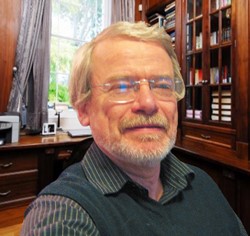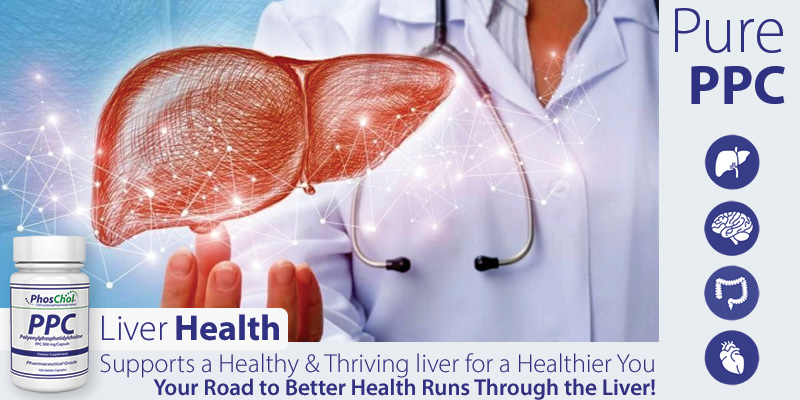NAFLD and NASH: An Emerging Health Concern of Importance and Urgency
 Dr. Karl J. Gundermann specializes in Clinical Pharmacology, Gastroenterology, Hepatology, and Phytotherapeutics.
Dr. Karl J. Gundermann specializes in Clinical Pharmacology, Gastroenterology, Hepatology, and Phytotherapeutics.
Dr. Gundermann is currently a Professor in Medical Biology at Szczecin University, Poland, and Managing Director of Gunderman Consulting Pharma located in Cologne, Germany. He also lectures around the world for various organizations on the topics of “New therapeutic ways in acute hepatic failure.”
NAFLD is perhaps the most common liver disorder in the world with a prevalence rate ranging from 6% to 35% of the general population, and a median rate of 20%. There is strong evidence that the occurrence of NAFLD is likely to correspond to regional trends in over nutrition, obesity, type 2 diabetes and metabolic syndrome. The disorder equally affects both sexes. Although, it is most common in overweight and obese persons and in patients with adult onset (type 2) diabetes, it can also be present in lean persons and in overweight children and adolescents.
NAFLD represents a spectrum of hepatic disorders characterized by macrovesicular fatty liver, with histology ranging from steatosis to non-alcoholic steatohepatitis (NASH), to NAFLD-associated cirrhosis and to hepatic cancer. It is the risk of progression from fatty liver as a benign disorder to liver disease with inflammation, fibrogenesis and cell death that makes NAFLD a medical challenge, as an established therapy is not yet available. A decade of clinical trials did not reveal a single intervention that has convincingly improved all important outcomes for all NAFLD patients. Low-calorie diet and physical exercise are accepted as a basic universal approach, but considering the rate at which NAFLD is becoming a worldwide epidemic, new therapeutic concepts are needed.
Polyenylphosphatidylcholine (PPC): A Compound of Interest and Study
One of the compounds in the focus of investigation is polyenylphosphatidylcholine (PPC) from soybean (Phoschol®). As the non-toxic PPC is widely used in membrane-associated hepatic diseases (for example by alcohol, medicaments and pollution), its effectiveness on NAFLD was also anticipated.
PPC contains dilinoleoylphosphatidylcholine (DLPC) as the main quantitative and therapeutically active ingredient, which differentiates it from other phospholipids or lecithins, or from extracts of other provenience. The incorporation of and/or replacement of endogenous membrane PC with highly unsaturated DLPC improves membrane fluidity, normalizes cellular permeability, increases repair/regeneration, reactivates membrane bound enzymes, and improves the overall biological activity/metabolism.
The Metabolic Impact of PPC
The following effects are pharmacologically evident:
- PPC reduces the severity of oxidative stress manifestation and lipid peroxidation by reducing
- transcription of pro-inflammatory genes by decreased expression of nuclear factor-κB (NF-κB),
- pro-inflammatory cytokines, such as of tumor necrosis alpha (TNF-α) and various interleukins,
- pro-inflammatory enzymes, such as of cyclooxygenase-2 (COX-2).
- PPC reduces ATP shortage, induced by overexpression of mitochondrial uncoupling protein-2 (UCP-2).
- PPC reduces serum and hepatic fat accumulation, by
- improving hepatic mitochondrial membrane potential,
- increasing hepatic triglyceride lipase activity.
- PPC acts as an anti-fibrogenic.
- PPC acts an anti-apoptotic.
A Clinical Summary
Sixty-five (65) clinical studies involving PPC and NAFLD have been published since 1980, and out of these forty-four (44) have been published since 2000. Nineteen mostly randomized clinical studies were open-controlled, one single-blind and three double-blind. Dosage of PPC and treatment duration varied between 0.9 g and 1.8 g/day per os, and lasted from 5 weeks to more than 24 months. The majority of the studies were 2-6 months in duration and used 1.8 g of PPC/day per os. Most patients suffered from NASH. NAFLD was mainly induced by obesity and type 2 diabetes, but partly also by hyperlipidemia, arterial hypertension, coronary heart disease/ atherosclerotic cardiosclerosis, chronic viral hepatitis, cholecystitis/cholelithiasis, Wilson’s disease, hypothyreoidism and pregnancy, or by mixed forms of these diseases.
According to the 65 clinical studies, PPC improved subjective symptoms and clinical findings such as pain in the right hypochondrium and hepatomegaly, biochemical markers of hepatic cytolysis, detoxification, excretion, synthesis, clearance and dyslipidemia, imaging data by ultrasonography or computed tomography, and histological evaluation of steatosis, necroinflammation and fibrosis. One study included a quality-of-life assessment by focusing on pain syndrome and dyspeptic symtoms.
The first significant effects were observed after 4 weeks, with further improvements over the following months (up to 24 months). PPC was more active than diammonium glycyrrhicinate, ursodeoxycholic acid (UDCA), bezafibrate, and fish oil. A combination therapy of metformin, diet, exercise and PPC in patients with type 2 diabetes was more effective than metformin, diet and exercise alone. The same was the case for the combination therapy of PPC with UDCA. No relevant side-effects were reported.
As Recommended in Hepatology
“Based on the pharmacological and clinical data, PPC would appear to be the drug of choice for significantly reducing or abolishing fatty liver of different origin, e.g. due to alcohol or obesity, even if the causing noxa cannot be eliminated, as is the case with diabetes-associated steatosis.”
(E.Kuntz and H.-D.Kuntz: Hepatology – Textbook and Atlas -, 3rd Edition, 2008).





 nutrasal
nutrasal